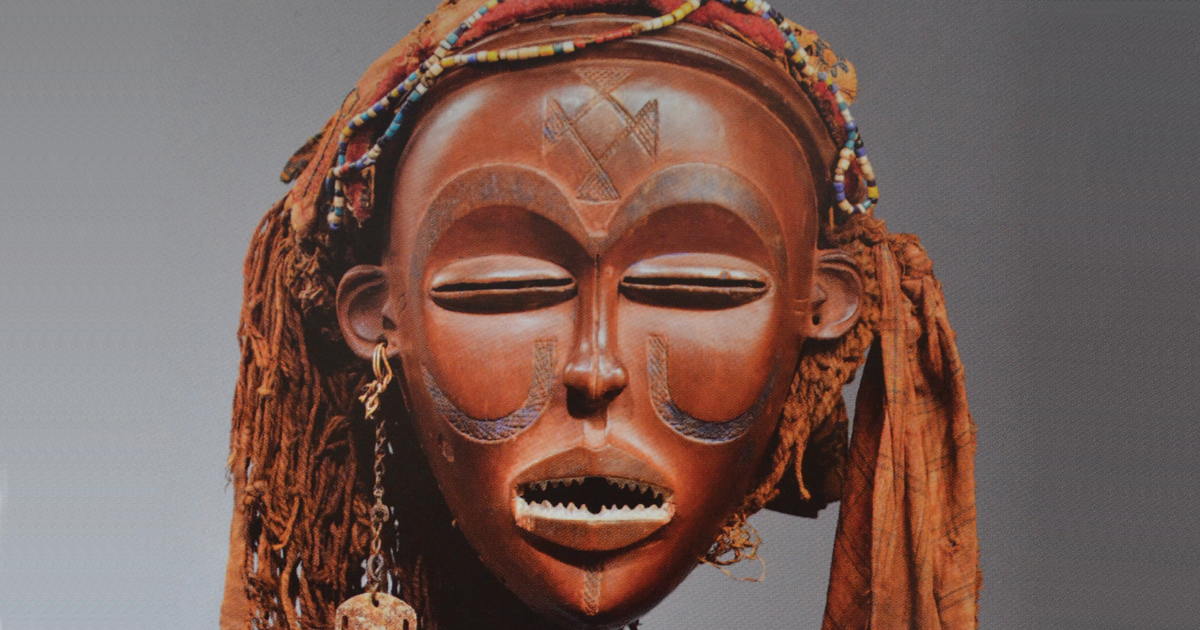[ad_1]
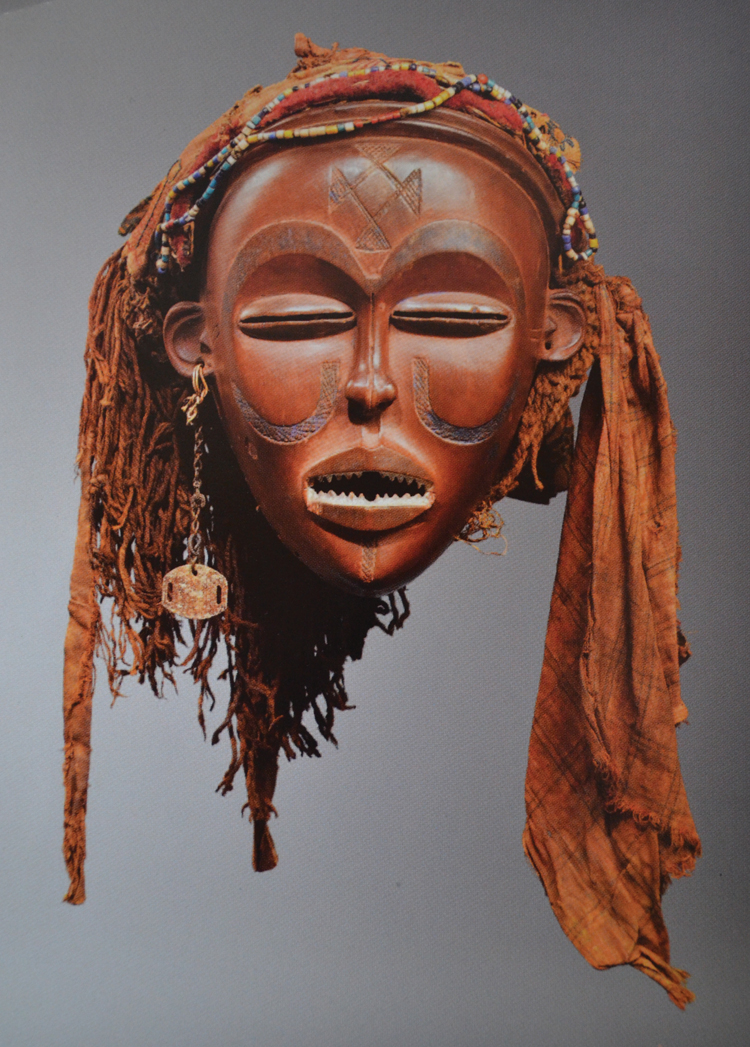
A Chokwe Mwana Pwo mask that was returned to Angola from a private collection in France in April 2016.
COURTESY SINDIKA DOKOLO FOUNDATION
Early in the blockbuster movie Black Panther, in a scene that has been much discussed for what it brings to bear on issues of race and institutionality, a young black man stands beside a white curator in the fictional Museum of Great Britain. As the curator talks about the history of a centuries-old axe she says was made in the West African nation of Benin, the man protests its provenance before changing tacks: “Don’t trip—I’m going to take it off your hands for you.” When told the artifact is not for sale, he replies: “How do you think your ancestors got these? Do you think they paid a fair price? Or did they take it, like they took everything else?”
This past November, a few months before the movie’s release, French President Emmanuel Macron traveled to Africa in an effort to improve social and economic cooperation between France and several countries on the continent. During a speech at the University of Ouagadougou in Burkina Faso, before 800 students gathered for the occasion, he lamented a lack of “shared imagination” required to forge ahead and attributed that lack in part to colonial injustice of the past. “I cannot accept that a large part of cultural heritage from several African countries is in France,” Macron said, at a podium framed by flags. “There are historical explanations for that,” he added, in reference to the colonial conquests and ethnographic expeditions that helped build the collections of such institutions as the Louvre and the Musée du Quai Branly–Jacques Chirac, a museum for indigenous art from Africa, Asia, Oceania, and the Americas.
The moment had all the markings of well-executed political posturing—until Macron made it clear he was offering more than mere sentiment. “In the next five years,” he declared, “I want the conditions to be met for the temporary or permanent restitution of African heritage to Africa.”
Macron’s historic pledge didn’t come out of the blue. In 2016, Patrice Talon, the president of Benin, made an official request to the French foreign ministry calling for the return of items stolen during the occupation of the country at the turn of the 20th century. The request went unheeded at the time, but less than a year later, an open letter signed by lawmakers and civil society groups from both Benin and France was sent directly to then President François Hollande demanding the return of some 4,500 to 6,000 “colonial treasures” to West Africa.
In response, the French Ministry of Foreign Affairs refused repatriation on the grounds of a centuries-old legal precedent known as the Edict of Moulins. Established in 1566, the edict originally ensured that sovereign powers could not give away assets they had inherited. Following the French Revolution, this decree was extended to cover all objects held within the public domain so that anything within the country that was purchased—or stolen—became the inalienable property of its citizens. In proposing a break with this tradition, Macron has steered his country’s foreign policy into uncharted territory.
Over the past few years, questions surrounding repatriation have evolved beyond whether it will happen to how—and by whom and in what way the fate of objects will be decided. In December 2017, Nigeria’s National Commission for Museums and Monuments issued its own repatriation request calling for the return of the prized Benin Bronzes, which were looted in 1897 during a well-documented raid by 1,200 British soldiers on the Royal Palace of Abomey as part of a punitive military expedition carried out against the West African kingdom. The commission’s request was sent to the British Museum and was not the first of its kind. In 2012, a similar letter was sent to the Museum of Fine Arts in Boston, which holds 32 bronze objects originally gifted to the institution by the American banker Robert Lehman, of the now defunct Lehman Brothers financial firm.
In an effort to address that request, curators from museums in Britain and Berlin as well as several other European institutions—alongside members of Nigeria’s National Commission for Museums and Monuments and Prince Gregory Akenzua of Benin’s royal family—met last year in Cambridge, England, to discuss the issue under the banner of the Benin Dialogue Group, which is scheduled to meet for a second time this October at the National Museum of Ethnology in Leiden, Netherlands. The group’s primary mandate is to set up a permanent display in Benin City that will feature a rotating display of objects that belonged to the former kingdom.
As for France, after a meeting with President Talon this past March, Macron announced the formation of his own dialogue group comprising the Senegalese author and economist Felwine Sarr and French art-historian Bénédicte Savoy. Together, the pair are charged with preparing a public report by November for the sake of a formidable goal: a concrete plan for the future of repatriation.

Patrice Talon and Emmanual Macron at University of Ouagadougou in Burkina Faso in November 2017.
©PRÉSIDENCE DE LA RÉPUBLIQUE DU BÉNIN, VIA FLICKR
The current heat around repatriation sometimes obscures the fact that pleas for the return of cultural objects go back decades. In 1973, in one of the earliest and most significant international calls for repatriation, Mobutu Sese Seko, the dictator who led the nation formerly known as Zaire (now the Democratic Republic of the Congo, or the DRC), brought up the issue during a speech before the United Nations General Assembly in New York. “During the colonial period we suffered not only from colonialism, slavery, and economic exploitation but also, and above all, from the barbarous systematic pillaging of all our works of art,” Mobutu told the assembled delegates. Among his demands was a plea for the return of stolen artwork “so that we can teach our children and our grandchildren the history of their countries.”
Mobutu’s words were effective: the U.N. agreed to a resolution, and later—owing to a preexisting pact between Zaire and Belgium—some 800 objects were repatriated for the sake of founding a national museum in Kinshasa. Such action would prove rare, however; despite several additional resolutions to further the cause, repatriation remains a contentious issue many decades later.
Historically, the main argument for Western museums retaining works of troubled provenance centered around their self-granted status as custodians of global culture. In 2002, for instance, at a time of increasing political pressure on the British Museum to return the prized Elgin Marbles to Greece (known there as the Parthenon Marbles), the directors of 18 prominent museums, including New York’s Metropolitan Museum, the Berlin State Museum, and the Louvre, signed the Declaration on the Importance and Value of Universal Museums. The decree stated: “Over time, objects so acquired—whether by purchase, gift, or portage—have become part of the museums that have cared for them, and by extension part of the heritage of the nations which house them.”
That sentiment has remained even as different scenarios have come under consideration. As Chika Okeke-Agulu, an Igbo-Nigerian art historian now at Princeton University, told me, “If conditions can be met and parties claiming ownership are able to demonstrate that they can keep artwork safe and housed in an adequate environment, then you have a very strong argument for why the works are better held in Africa than the West. [But] part of the discussion that needs to be had is what type of institution should hold the work. Is it a museum in the classic sense of the ethnographic museum?” Or rather, as in the less museologically inclined case of the Royal Palace in Benin, a potential home “where objects have a particular relationship with the place?”
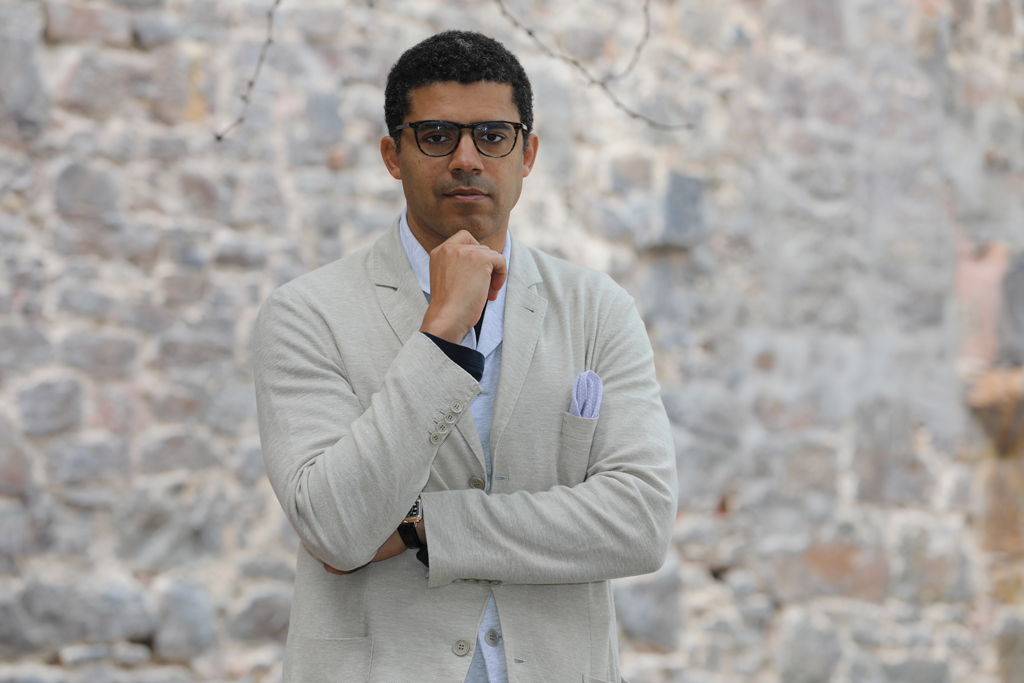
Congolese art collector Sindika Dokolo founded his eponymous foundation in 2006.
COURTESY SINDIKA DOKOLO FOUNDATION
Sindika Dokolo, a Congolese art collector and businessman based in Angola, has worked to conceive different arrangements for art acquired from outside sources. In 2005 he purchased a notable collection of contemporary African art that belonged to the late German tycoon Hans Bogatzke, and his holdings have since grown to more than 5,000 works. “When Picasso first encountered classical African art, he said the clarity of the work is that it doesn’t try to represent or show aesthetics—it tries to embody something much deeper: objects with a soul,” Dokolo told me over the phone from Brussels. Such a philosophy underpins his efforts as a collector and the founder of an eponymous foundation whose mission statement declares a focus on “conceptualizing and producing cultural, economic, and political instruments and mechanisms for the development of contemporary African art.”
A large part of the foundation’s effort involves advocating for repatriation. Dokolo works with groups of researchers who sift through archives to identify and track pieces of heritage that might originally have belonged to the Chokwe people—a group indigenous to northeastern Angola and the Southern Congo—before looting during the Angolan civil war. Once such an object is identified and traced through museum logs and auction records, Dokolo approaches the current owner with an offer either to sell it to his foundation or face the prospect of a lawsuit.
“We present all the elements . . . we have to prove that it originally belonged to a museum,” Dokolo said. “We also make sure they understand the risk to their reputation and the possible judicial process. Then we negotiate the amount, which is usually not the market value but, rather, what they originally paid for the work.” In one example he cited, Dokolo said he paid the owner of a valuable Chokwe princess statue $100,000 instead of the initial $1 million asking price.
More recently, Dokolo’s foundation secured five pieces of Chokwe heritage to be handed over in June during an official ceremony at the Angolan Embassy in Brussels. The bulk of those objects were to return to their original home, the Dundo Museum in Angola.
Resources and ready institutions have been abundant in cases taken up by Dokolo, who bankrolls his efforts through his own wealth and that of his billionaire wife, Isabel dos Santos, daughter of Angola’s long-term former president, José Eduardo dos Santos. In other postcolonial countries such as the DRC, however, funding can be sparse and the conditions required to maintain a museum difficult to achieve. But while repatriation skeptics often use such factors to justify the continued safekeeping of objects in North America and Europe, some don’t buy the argument.
“Who gives these people the audacity, and where do they get their arrogance?” asked Bonaventure Soh Bejeng Ndikung, a Cameroonian biotechnologist and founder of Berlin’s Savvy Contemporary art space, as well as curator-at-large for last year’s Documenta 14. “You come to a place, you find things—beings—that people have made and kept for 800 years. You steal them, put them in your museum, and then want to tell those same people they don’t know how to preserve these things even though they have done it in the past for hundreds of years?”
For Ndikung, insistence on a universal museum model is a mark of “colonial arrogance” on the part of institutions and adherents who sustain them. “Who says a museum is the place where these things are supposed to be kept?” he asked, echoing Okeke-Agulu’s point that other significant cultural sites aside from museums can house such treasures.
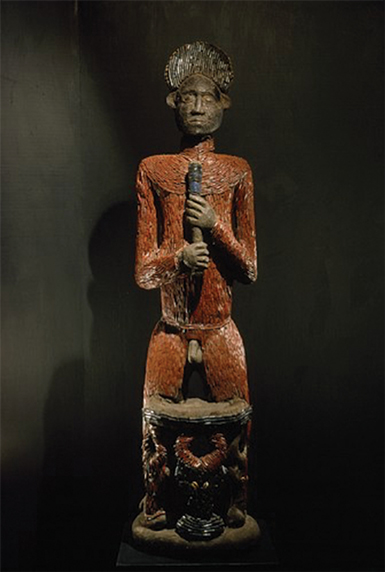
The Afo-A-Kom sculpture, which was returned to Cameroon in 1974.
COURTESY SINDIKA DOKOLO FOUNDATION
By way of example, Ndikung brought up the Kom people of Cameroon, who in 1973 called for the return of the Afo-A-Kom, a sacred wooden statue of a standing man behind a throne supported by three carved buffalo heads that was stolen from their village of Laikom. The sculpture, supposedly taken by a Kom prince, ended up in the hands of an art dealer who sold it to New York gallery owner Aaron Furman. Following negotiations and an offer—made by American art collector Warren M. Robbins, along with several other Americans and Kom who were living in the United States—to buy back the work for the original selling price of $30,000, the Afo-A-Kom was returned to its home in the village palace. “People were happy and there was a national celebration,” said Ndikung, who added that the Afo-A-Kom has been kept safe since and remains accessible to the public. “The day you say you want to send the objects back, there will be people to receive those objects.”
Along similar lines, Marie-Cécile Zinsou, a French-Beninese art historian, told me how, in 2006, shortly after she established a small arts foundation in the Republic of Benin, she helped mount a temporary exhibition of artwork owned by Quai Branly in Dahomey, the capital of the former Benin kingdom. Around 275,000 visitors saw the exhibition, which was held in the Royal Palaces of Abomey, a UNESCO World Heritage site occupied by a dozen kings between 1625 and 1900. The experience proved that exhibiting such artwork in a socially significant way doesn’t require a building “designed by David Adjaye,” Zinsou said. “You often hear the argument that people won’t be able to look after [repatriated artwork] and will either destroy or sell it. But why would people sell something of spiritual importance to them? If it gets into the right hands, that shouldn’t happen.”
Ndikung, for his part, maintained that conversations around repatriation “shouldn’t be happening between nation states but, rather, on the level of the people to whom these so-called objects belong.” The distinction, as is abundantly clear on the African continent, acknowledges the fact that most of the objects in question belong to groups of people whose allegiances predate the national borders drawn up by European powers during the Berlin Conference of 1884–85, making it difficult to determine ownership based simply on matters of national identity. Ndikung gave as an example the people descended from the Sultanate of Bamoun, who are centered in Foumban, Cameroon; they still live in the city of their ancestors. “You should be speaking to them, not the government,” he said.
Another reason that repatriation might best be addressed by citizens rather than the state is the growth of the African private sector. “This is what has happened in the West,” said Okeke-Agulu, referring to the philanthropic efforts of “individuals and collectives of wealthy people” who have historically been instrumental in setting up art institutions. “This is what needs to be done across the continent in places where you have people of means. They have to be mobilized to see this as part of educating their people and growing their economies.”
There is cause for hope, Okeke-Agulu said. “Wherever you look, a new class of collector is rising across Africa,” and these collectors could be “compelled or convinced that the next stage is to display the work they have brought to the public so that it remains within the country.”
The recent opening of two private museums—the Zeitz Museum of Contemporary Art Africa in Cape Town and the Museum of African Contemporary Art Al Maaden in Marrakech—could help spark competition among collectors on the continent. “We’ve seen it elsewhere, where it becomes a trend,” said Okeke-Agulu. “That’s what I’m hoping to see in places like Nigeria, where a new class of wealthy people are starting to look at each other to see who’s collecting what and who has a bigger collection.”
In a potential sign of such activity, Dokolo, the Congolese collector, has followed suit by establishing his foundation’s headquarters in Luanda, Angola, where he displays his collection of contemporary art alongside some of his repatriated Chokwe sculptures. “The idea is to have these important objects accessible, so we hold a triennial of contemporary art in Angola, and have just had our third edition.” Over the three Luanda Triennials held so far, Dokolo estimates that more than 100,000 local children have had a chance to see their people’s heritage.
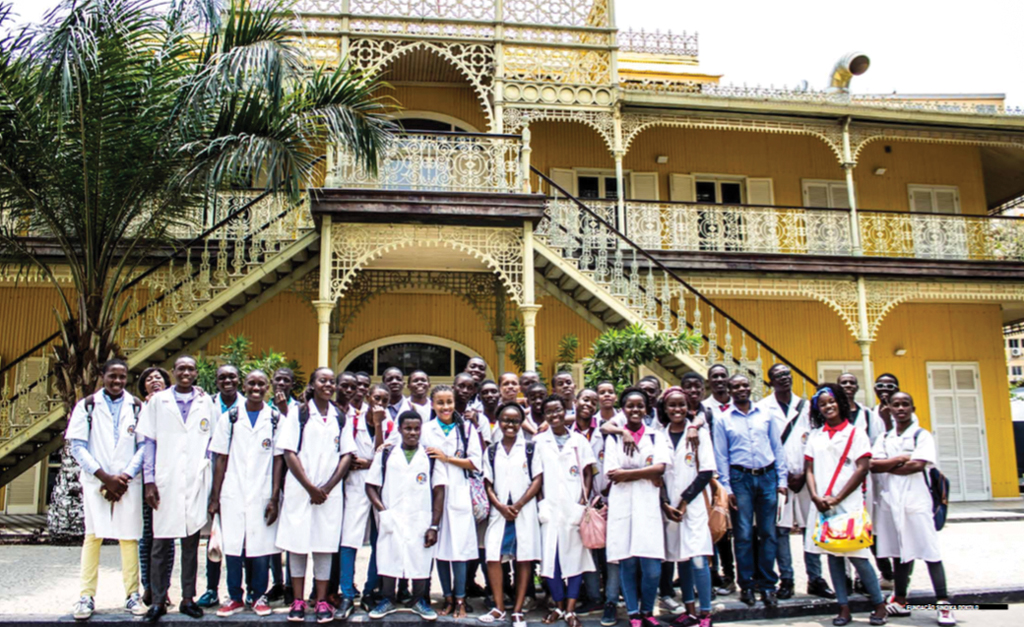
Children in front of the Palácio de Ferro, attending the Luanda Triennial in 2016.
COURTESY SINDIKA DOKOLO FOUNDATION
Repatriation cannot be treated as a single issue with a single solution, most observers agree; it must be addressed case by case. For example, Dokolo pointed to the Royal Museum for Central Africa in Tervuren, Belgium, which owns a significant portion of the heritage of the DRC. Rather than insisting that the Royal Museum return its holdings, Dokolo said, the focus should be on the moral responsibility of such a museum to make those objects more accessible, perhaps to establish rotating exhibitions in countries like the Democratic Republic of the Congo as a way to help grow culture in those areas.
In that regard, Benin could prove to be a significant test case. “We have done no work on national heritage,” Zinsou, the art historian, said of the lack of exhibition space in Benin. But, as her foundation proved in the past, working together with a foreign museum can make for improvement.
The prospect for such an arrangement could follow an exhibition at the Hamburg Museum für Kunst und Gewerbe in Germany, which earlier this year mounted “Looted Art? Provenance Research on the Collections of the MKG” to showcase three Benin bronzes that the institution constituted as stolen and marked for a different future. Given their ill-gotten status and a new appraisal of them as more than just art objects in the European sense, the works will be passed on to Hamburg’s ethnological museum, better-suited to provide what an exhibition description called “a fitting context for a respectful treatment of these works,” while further plans for possible return are considered. As quoted in the Art Newspaper, Sabine Schulz, the MKG’s director, wrote in the show catalogue, “Hamburg could take a pioneering role and return the first bronzes to their country of origin. That would be a signal!”
In the midst of the exhibition’s run, the German Association of Museums issued a 130-page “Guide to Dealing with Collection Goods from Colonial Contexts” in May, with a code of conduct suggested for research into provenance and responding to repatriation claims. In a statement accompanying the report, Monika Grütters, the German government’s commissioner for culture, said, “With these guidelines, the German Association of Museums is presenting a comprehensive contribution to a discussion that doesn’t end here but is only just starting.”
Another recent case involving a different point of origin centers on the Victoria & Albert Museum in London. More than a decade ago, Ethiopia requested the return of hundreds of manuscripts and artifacts that were taken during the 1868 British invasion of Maqdala, the capital of the former Abyssinia. As the V&A Museum prepared for an exhibition of some of those objects to mark the sesquicentennial of the Battle of Maqdala, the museum offered Ethiopia earlier this year the long-term loan of an undisclosed number of historical works from its collection—an offer promptly rejected by the country’s government. Despite criticism that a loan does not constitute a proper repatriation, Tristram Hunt, the V&A director, told the Guardian that such an arrangement would be “the easiest way to manage it” and that, when politicians make sweeping promises to return all objects to a country, they often have “geopolitical, if not trade and defense, deals in mind.”
Ndikung, the Cameroonian curator, said that, however complicated the matter may be, recognizing repatriation calls for understanding the context in which it happens. “The word in French is déraciné—derooted,” he said of the effects of robbing a country of its past. “Museums in the West assign economic and maybe a bit of epistemic value to these so-called ‘objects.’ But in the cases where these things come from, the value assigned to them is of a communal, spiritual nature. They have subjectivities. They have agencies. They determine people’s destinies, but, when they end up in museums in the West, they become objects. They are, actually, subjects.”
And the matter is not just an issue for museums in Europe, where there has been the most repatriation activity of late. “American institutions have a lot of these works we’re talking about, and yet it’s from the U.S. that the argument against the return of these works is most virulent,” Okeke-Agulu said. “Why is that? They can’t just hide their heads in the sand and think this doesn’t concern them.”
According to past findings issued by the Archaeological Institute of America, some 85 to 90 percent of “classical and certain other types of artifacts on the market do not have a documented provenance.” And though many museums in the United States abide by the best practices set by the American Alliance of Museums, those standards remain unbound by law and only apply to repatriation claims on objects taken from 1970 onward.
As evidence of an issue in urgent need of addressing, Okeke-Agulu cited what he called the “most visible instance” of the American position as articulated by the former director of the Art Institute of Chicago and current president and CEO of the J. Paul Getty Trust, James Cuno. In his 2008 book, Who Owns Antiquity?: Museums and the Battle Over Our Ancient Heritage, Cuno wrote, “To include antiquities within the political construct of cultural property is to politicize them. It is to make them part of modern national cultural politics.”
Okeke-Agulu disagreed, saying that thinking like Cuno’s rejects “the notion that antiquities are cultural property belonging to specific groups of people.” He reiterated that it is not only Western museums that are suited “to conserve and produce knowledge about antiquities and make them accessible to the public and the scholarship.”
Dokolo, from his vantage in Angola, said, “We have to be consistent and structured, and we have to communicate. Maybe in the 21st century people have started to understand that other people’s rights are actually a moral issue.” With such an understanding, the past can start to change for a better future, he said. “Art has a political and moral dimension to it that you cannot wash your hands of and say, ‘It’s not our problem—it’s the way it was when I got here.’ That is not acceptable anymore.”
A version of this story originally appeared in the Summer 2018 issue of ARTnews on page 64 under the title “Back to Where They Once Belonged.”
[ad_2]
Source link

